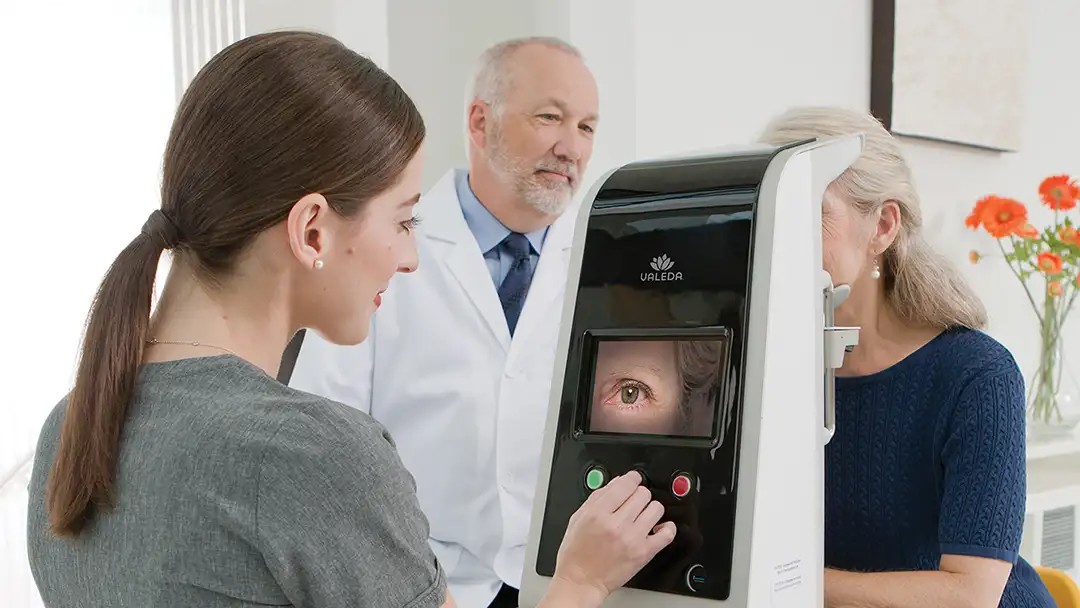
What is legal blindness? Our expert explains this term and discusses the common eye diseases that can cause blindness.
Types of Blindness
The greatest fear many patients with eye disease have is going blind. Preventing or slowing down the process that leads to losing vision starts with understanding what can cause blindness and what the available treatments are.
Vision impairment is defined as having less than normal vision.
Absolute blindness, defined as having no light perception, is rare. When someone has absolute blindness, that person can’t tell the difference between light and dark, even when a bright light is shined into the eyes. Assistance from the government and foundations is available for persons living with this degree of blindness.
By contrast, legal blindness is defined in the United States as visual acuity that is best corrected (with glasses) at 20/200 or less in the better eye, and/or a visual field of 20 degrees or less. Legally blind patients qualify for benefits from the government. People with legal blindness may still have some usable vision.
Legal blindness can be caused by several eye diseases, which we explain in more detail below:
- age-related macular degeneration (AMD)
- retinitis pigmentosa
- diabetic retinopathy
- cataract
Age-Related Macular Degeneration
Legal blindness can be caused by age-related macular degeneration (AMD) because this disease affects the central vision provided by the macula (the specialized central part of the retina). Patients with severely damaged maculas in both eyes have visual acuity measured on an eye chart of 20/200 or worse. However, their peripheral, or side vision is usually intact, so they can see shapes and movement, and read large letters with the help of magnification and bright lights.
Patients with AMD can decrease their risk of legal blindness by stopping smoking, eating vegetables, fruits (every day), and salmon or sardines (twice a week), and, in some patients, by taking the AREDS formula antioxidant vitamins. Also, medicines can be injected into the eye in patients with wet AMD to help slow or stop vision loss.
Retinitis Pigmentosa
Rare genetic diseases affecting the retina can also cause legal blindness. For example, retinitis pigmentosa can cause “tunnel vision,” in which only a tiny window of central vision remains. Such patients might be able to read 20/20 size letters but would be legally blind because of the small visual field. Retinal gene therapy developed at the Scheie Eye Institute at the University of Pennsylvania has recently been FDA approved for one form of the hereditary retinal disease called Leber’s congenital amaurosis. The treatment works by injecting normal copies of the RPE65 gene into the retinas of patients born with mutations in this gene. Additional research is expected to lead to gene therapy for other forms of hereditary and acquired eye diseases.
Diabetic Retinopathy
Another retinal disease that can cause legal blindness is diabetic retinopathy. Patients with diabetes can lose vision from swelling or bleeding in the retina, or from retinal detachment. Diabetics can decrease their risk of legal blindness with good blood sugar and blood pressure control and annual eye exams.
Glaucoma
Legal blindness can also be caused by glaucoma, a disease in which the retinal neurons that send signals from the eye to the brain die. This disease most often progresses slowly over time, with patients losing part of their visual field and/or visual acuity. If the visual field diminishes to 20 degrees or less, then the patient is legally blind. The normal binocular visual field (using both eyes) in the horizontal plane is about 180 degrees. Progression of visual field loss can usually be slowed or stopped by lowering the eye pressure with medications and/or surgery. The earlier the diagnosis and treatment, the better, to preserve your sight.
Cataract
Severe cataract, or clouding of the lens can cause visual acuity to drop to 20/200 or less because the cataract does not permit enough light to reach the retina in the back of the eye. Fortunately, cataracts can be surgically removed and the cloudy lens replaced with a clear plastic one, usually resulting in significantly improved vision.
Summary
Several types of eye diseases can cause legal blindness, though some treatments may be effective in preventing or slowing down the progression of vision loss. Learn more about each of these diseases, including symptoms, treatment options, causes, cures, risk factors, and more, by following the links in this article.
About BrightFocus Foundation
BrightFocus Foundation is a premier global nonprofit funder of research to defeat Alzheimer’s, macular degeneration, and glaucoma. Since its inception more than 50 years ago, BrightFocus and its flagship research programs—Alzheimer’s Disease Research, Macular Degeneration Research, and National Glaucoma Research—has awarded more than $300 million in research grants to scientists around the world, catalyzing thousands of scientific breakthroughs, life-enhancing treatments, and diagnostic tools. We also share the latest research findings, expert information, and resources to empower the millions impacted by these devastating diseases. Learn more at brightfocus.org.
Disclaimer: The information provided here is a public service of BrightFocus Foundation and is not intended to constitute medical advice. Please consult your physician for personalized medical, dietary, and/or exercise advice. Any medications or supplements should only be taken under medical supervision. BrightFocus Foundation does not endorse any medical products or therapies.
- Risk Factors









